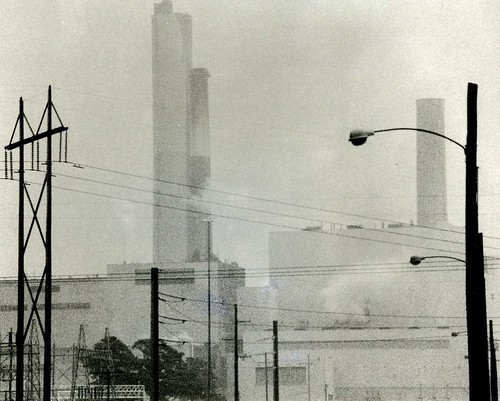
January 3, 2008
http://www.delawareonline.com/apps/pbcs.dll/article?AID=/20080103/BUSINESS/801030332/1003
Power plant's cooling system said to destroy millions of fish each year
NRG's Indian River power plant is likely to be the next battleground in a regional war over fishery losses to industrial and power plant cooling water intakes, state regulators and environmental groups predicted Wednesday.
Department of Natural Resources and Environmental Control officials said several groups or individuals have asked for a public hearing on Indian River's draft wastewater discharge permit.
"There's significant interest in it, so we will have a hearing," said Peder Hansen, who directs DNREC's surface water discharges section. He estimated that a hearing could take place as early as next month.
Much of the attention has focused on the power plant's cooling water intakes, which destroy millions of fish, crabs and larvae each year.
NRG draws as much as 350 million gallons of water daily from the nearby Indian River, using it once for cooling before returning heated flows to the environment.
Although a company-commissioned study concluded that the operation had no "adverse impact," the plant chewed up the equivalent of 800,000 year-old winter flounder during one year studied, more than 518,000 year-old Atlantic croaker and nearly 2.7 million bay anchovy. Those figures assumed that huge numbers of tiny fry and larvae would have survived to age 1 had they not been sucked into the plant.
State Sen. George H. Bunting Jr., D-Bethany Beach, is among those who asked for a hearing. "Here we've gone to a great extent in Delaware to come up with a fishing license so we know how many fish are taken in our waters, and those intakes alone kill more fish than all the fishermen I know in my district will ever catch," Bunting said.
Several industries along the Delaware River employ similar and in some cases far larger "once-through" cooling systems, including Conectiv's Edge Moor power plant in Wilmington, the Delaware City Refinery and the Salem/Hope Creek nuclear complex.
The once-through process has come under increased attack by environmental groups after a federal court ruled last year that utilities must use "best available" technologies to protect fish.
U.S. Environmental Protection Agency studies estimate that the Salem/Hope Creek nuclear plant destroys the equivalent of 347 million year-old fish annually. The same report ranked the Conectiv Edge Moor power plant and Valero Delaware City Refinery as having the second and third deadliest intakes, with about 158 million year-old equivalents for Conectiv and 73.4 million lost to the refinery.
Industries have argued that river ecosystems are not harmed by the fish losses, while ruling out cooling towers as too costly. Salem/Hope Creek's owners have estimated that cooling towers could cost $1 billion or more.
"The draft permit DNREC issued for NRG does not even attempt to require compliance" with Clean Water Act requirements for fish protection, Maya K. van Rossum, who directs the Delaware Riverkeeper Network, said in a recent request for a hearing.
Van Rossum's group wants regulators to bar once-through cooling and order the use of cooling towers that recycle the water that NRG, Conectiv, Delaware City and Salem tap from rivers -- unless they can develop an equally effective alternative before their next five-year wastewater discharge permit expires.
Van Rossum said that the Indian River permit is an important symbol in the regional debate over cooling towers.
DNREC's current permit for the plant expired in 1992, with progress blocked until recently by disputes over the effect of the plant's heated water on the environment near its discharge. Federal and state negotiators recently developed a compromise proposal on temperature limits for plant discharges.
DNREC's Hansen said NRG's proposals for the temperature limits require more study. NRG had argued that it already has investigated the effects baywide and found that the environmental effects did not justify a cooling tower. EPA reviewers, however, have described past studies as "deficient."


No comments:
Post a Comment